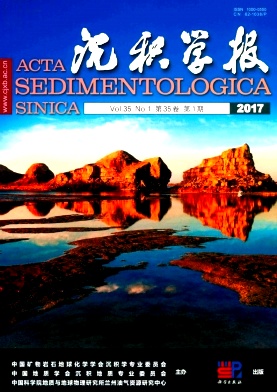Sedimentary Characteristics and Geological Significance of Storm Deposite of Paleozoic in the Olongbluk Block
doi: 10.14027/j.cnki.cjxb.2017.01.004
- Received Date: 2015-12-30
- Rev Recd Date: 2016-04-13
- Publish Date: 2017-02-10
-
Key words:
- Olongbluk block /
- Paleozoic /
- tempestite /
- geological significance
Abstract: To further explore the geological significance of the tempestites of Paleozoic that exposed in the Olongbluk block, and investigate the effect of frequently strorm climate on the sedimentary characteristic of Paleozoic in northern Qaidam basin, a comprehensive field geology survey and laboratory analysis have been carried out in the study area, and several typical sedimentary structures have been distinguished in the area, e.g. scour, ripple mark, hummocky cross-stratification, and syngenetic deformation structure. According to the differernt lithology and other characteristics, each set of tempestite can be divided into different sections:activity period, off-load period, returning period, whirling period and rest period. Depending on the combination of the sections, tempestites can be divided into different kinds of storm sequences to represent different sedimentary environment. The early Paleozoic developed five storm sequences which represent in-situ-type sequence or near source sequence, and the late Paleozoic developed near source sequence, in-situ-agitational sequence and deep-slope sequence. Under the research of the lithological characteristics of Paleozoic, the Olongbluk area was in a shallow sea environment which was always effected by transgression in early Paleozoic,and changed into epicontinental sea environment in the late.
| Citation: | MA Shuai, CHEN ShiYue, WANG Feng, SHAO PengCheng, WANG ZhiJin. Sedimentary Characteristics and Geological Significance of Storm Deposite of Paleozoic in the Olongbluk Block[J]. Acta Sedimentologica Sinica, 2017, 35(1): 35-45. doi: 10.14027/j.cnki.cjxb.2017.01.004 |






 DownLoad:
DownLoad: